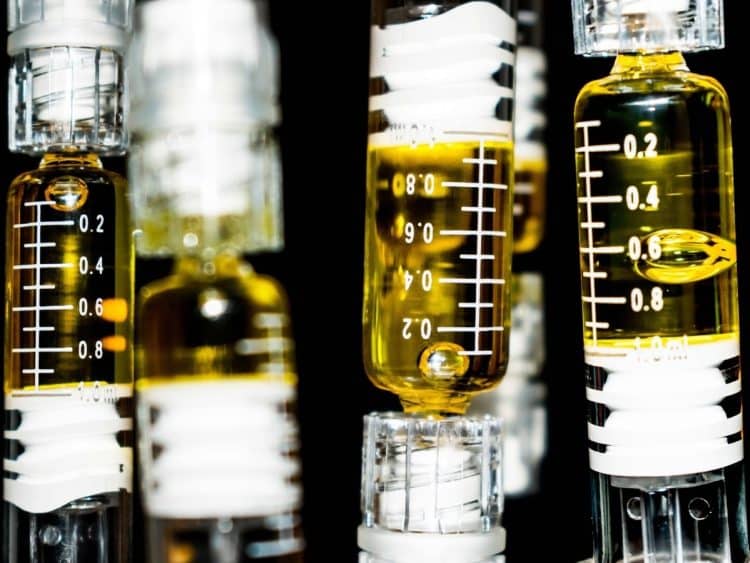A recent outbreak in vaping-related illnesses has led to increased scrutiny of cannabis oil cartridges. One standard ingredient that has previously drawn attention is propylene glycol.
What is Propylene Glycol?
Propylene glycol is an additive commonly used by food and pharmaceutical companies. It’s odorless, colorless, and nearly tasteless with a consistency that’s slightly thicker than water. Chemically, it’s a useful solvent. In vaporizer oils, propylene glycol is used to reduce viscosity (make the oil thinner) and improve vapor output.
The Food and Drug Administration classifies propylene glycol as “generally recognized as safe.” However, a few studies have questioned the compound’s use in vaping products, whether nicotine- or cannabinoid-based.
According to the Centers for Disease Control & Prevention, users “may not know what is in their e-cigarette or e-liquid solutions. Many of the products and substances can be modified by suppliers or users.” There are no federal regulations controlling how these cartridges are made… yet.
In 2015, the New England Journal of Medicine revealed that vaporizing propylene glycol generated formaldehyde-releasing agents; concentrations correlated to voltage used, with higher voltage being more harmful. [1]
Likewise, a 2017 study conducted by researchers at the Medical Marijuana Research Institute looked at the residual vapor after multiple thinning agents were heated to 230°C. They found that propylene glycol vapor produced acetaldehyde and formaldehyde, concluding that “individuals who vaporize cannabis oil products may risk exposure to harmful formaldehyde levels. Although more research is needed, consumers and policy makers should consider these potential health effects…” [2]
Even without heating, propylene glycol may be harmful when inhaled. An earlier 2010 study published by the International Journal of Environmental Research and Public Health determined that propylene glycol circulating in the air indoors was associated with various lung ailments. [3]
No one has demonstrated a definitive link between a particular vaping ingredient and pulmonary disease or cancer. Propylene glycol, in particular, is extremely common. It’s used in food, medicine, cosmetics, and more.
Kidney and Liver Damage
People with damaged kidneys or livers may have more trouble clearing propylene glycol from their systems compared to healthy adults. This could potentially lead to an unsafe buildup in the blood. For example, a woman with kidney damage received more than 40 times the recommended dose of propylene glycol after her throat swelled and she was treated with lorazepam (a medication that contains propylene glycol). The result was acidosis and other symptoms of toxicity.
Final Thoughts
Consumers who are concerned about propylene glycol can seek out specialty, propylene glycol-free cannabis oil. Until the cause of the vape crisis is determined, it may be best to choose alternative forms of consumption.
Image source: Big Buds Mag
References:
- Jensen, R. Paul, et al. “Hidden Formaldehyde in E-Cigarette Aerosols.” New England Journal of Medicine, vol. 372, no. 4, 2015, pp. 392–394., doi:10.1056/nejmc1413069. Times Cited = 264 (ResearchGate), Journal Impact Factor = 70.670
- Troutt, William D, and Matthew D DiDonato. “Carbonyl Compounds Produced by Vaporizing Cannabis Oil Thinning Agents.” Journal of Alternative and Complementary Medicine, vol.23, no.11, pp. 879-884. Times Cited = 3 (ResearchGate), Journal Impact Factor = 1.395
- Choi, Hyunok, et al. “Sources of Propylene Glycol and Glycol Ethers in Air at Home.” International Journal of Environmental Research and Public Health, vol. 7, no. 12, 2010, pp. 4213–4237, doi:10.3390/ijerph7124213. Times Cited = 15 (ResearchGate), Journal Impact Factor = 2.468












